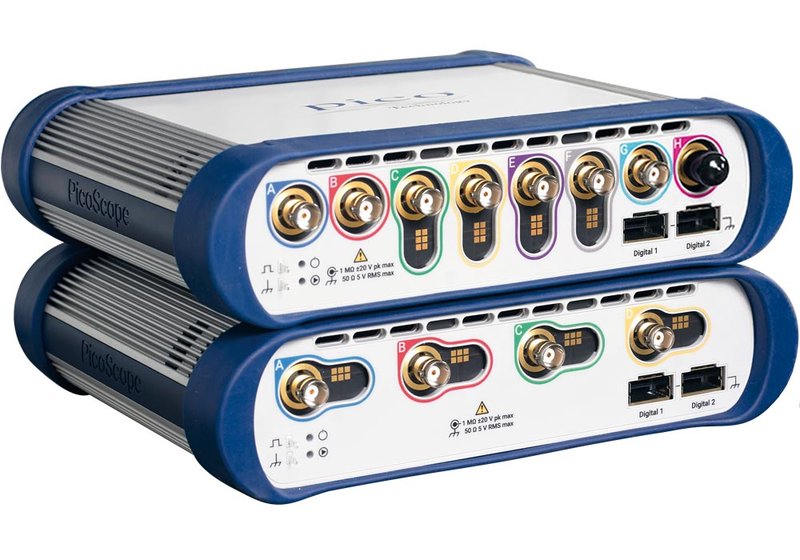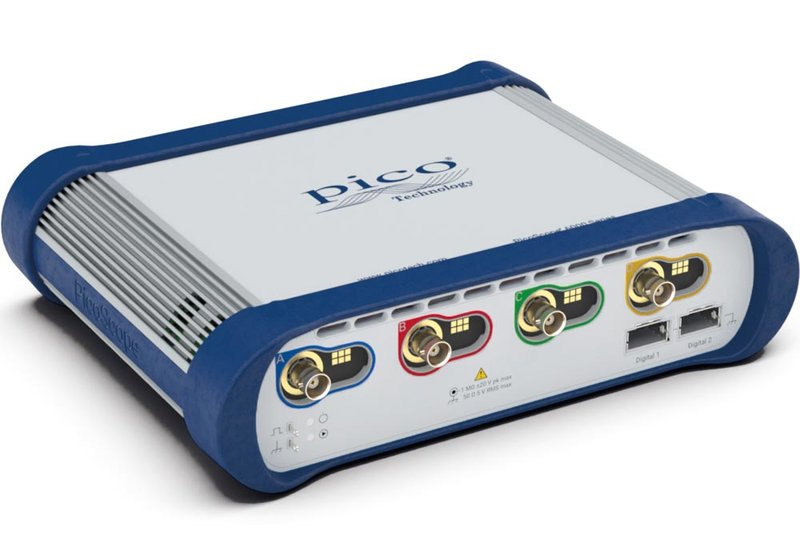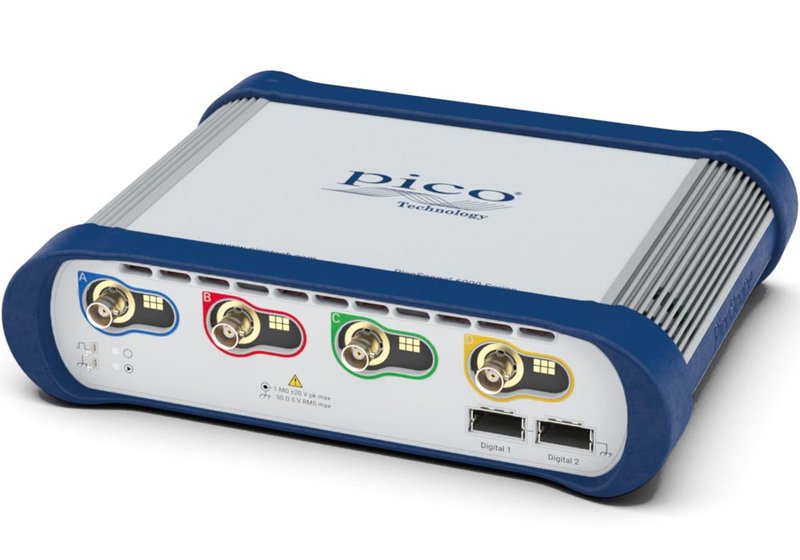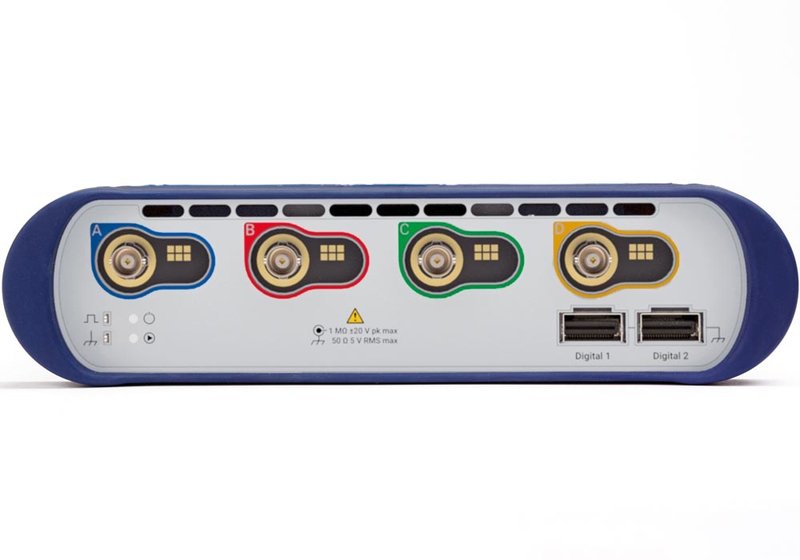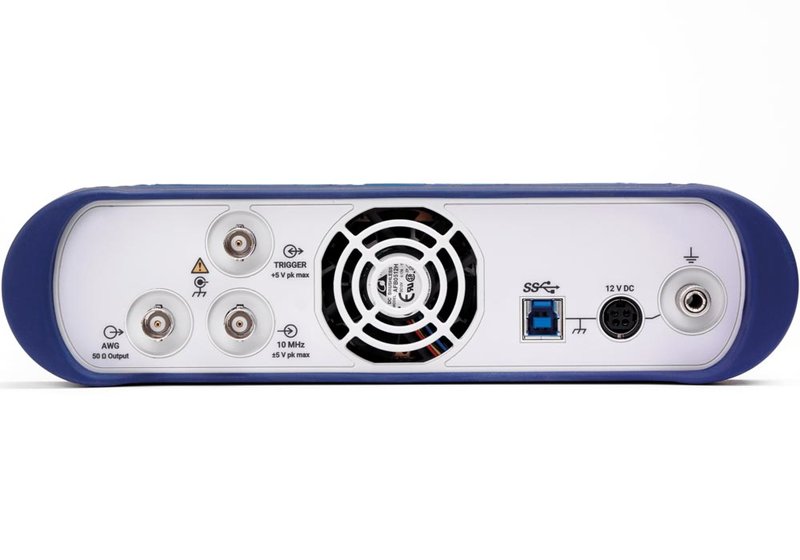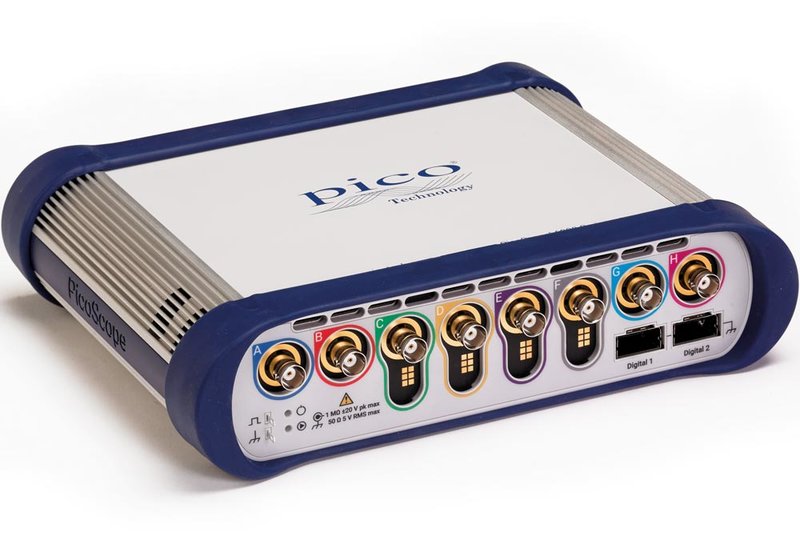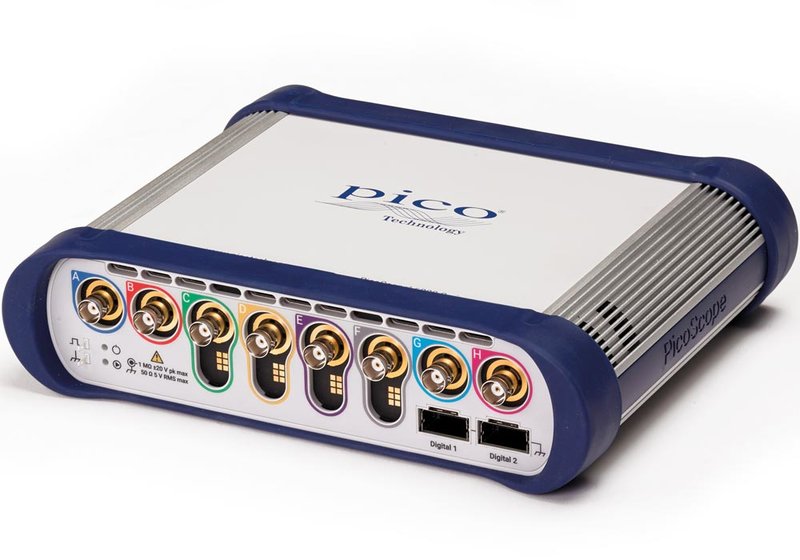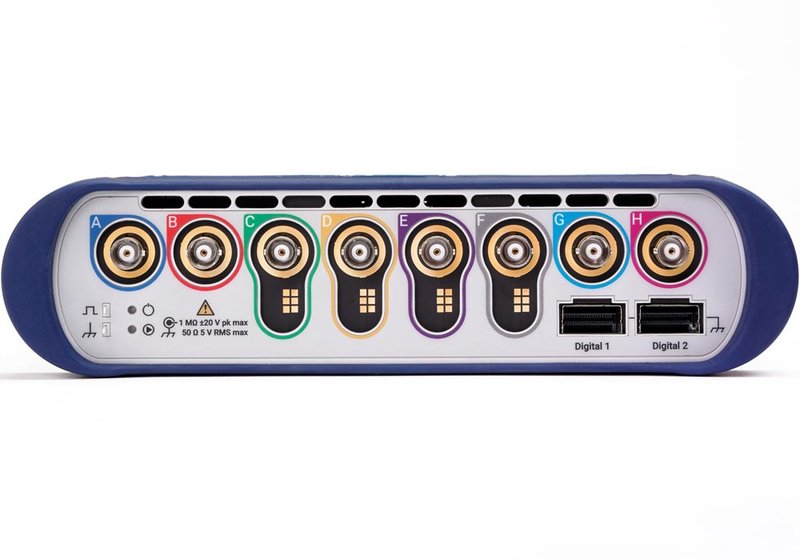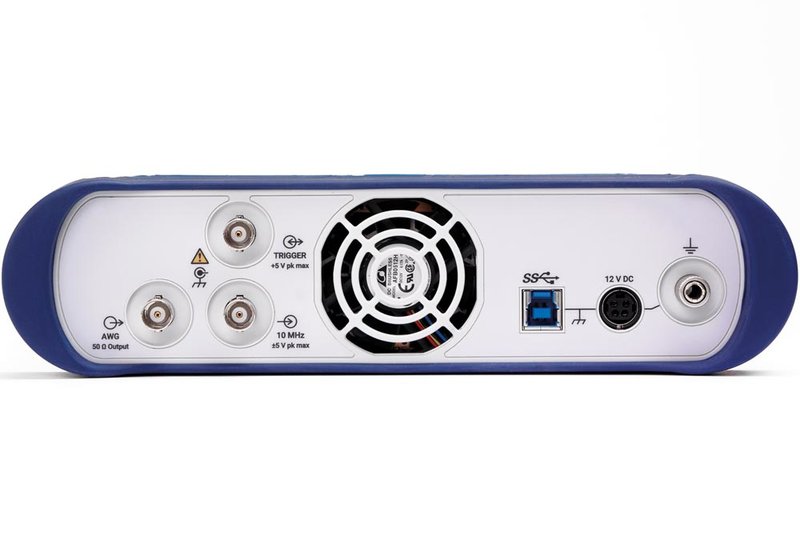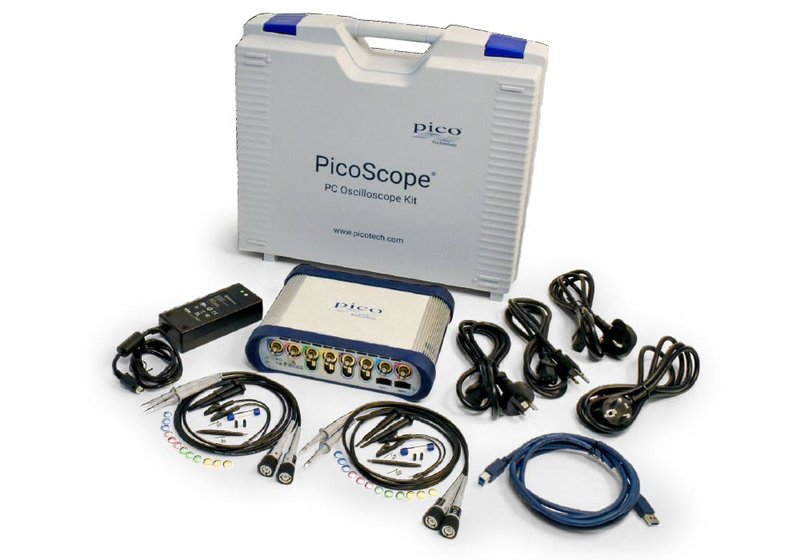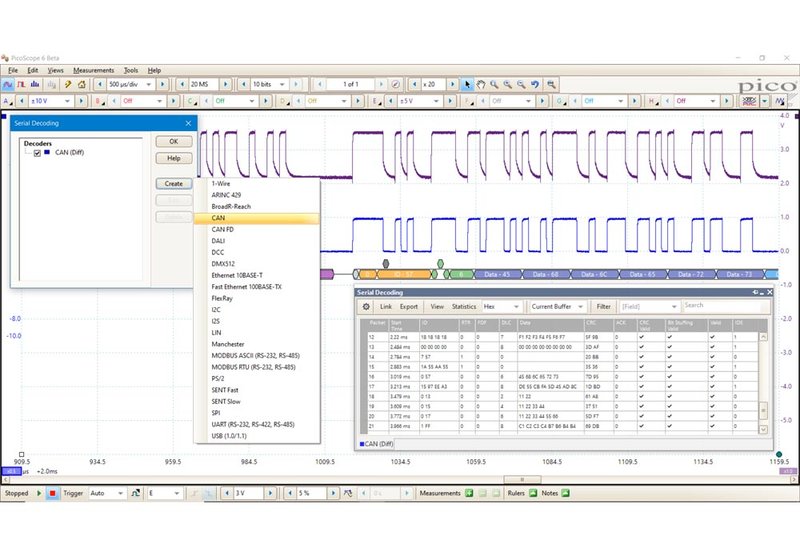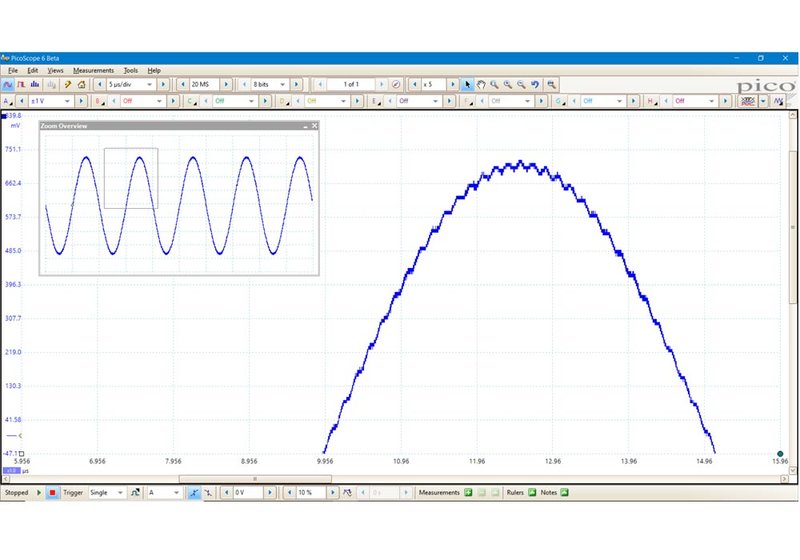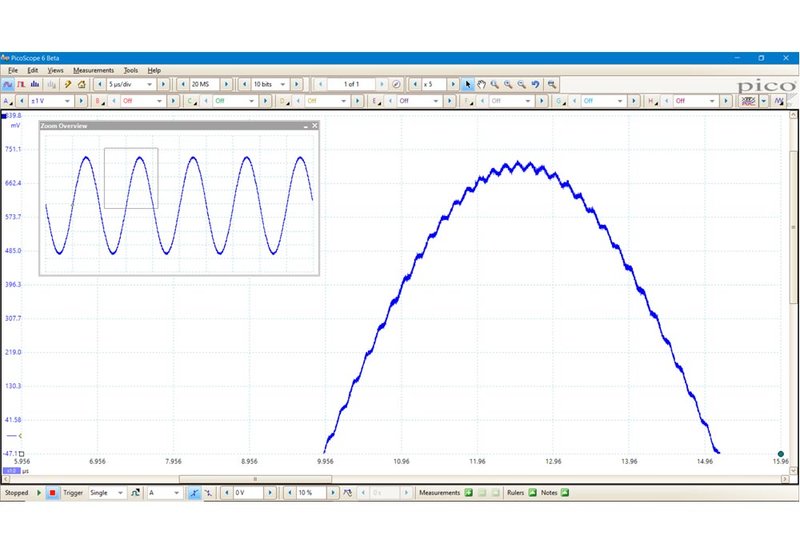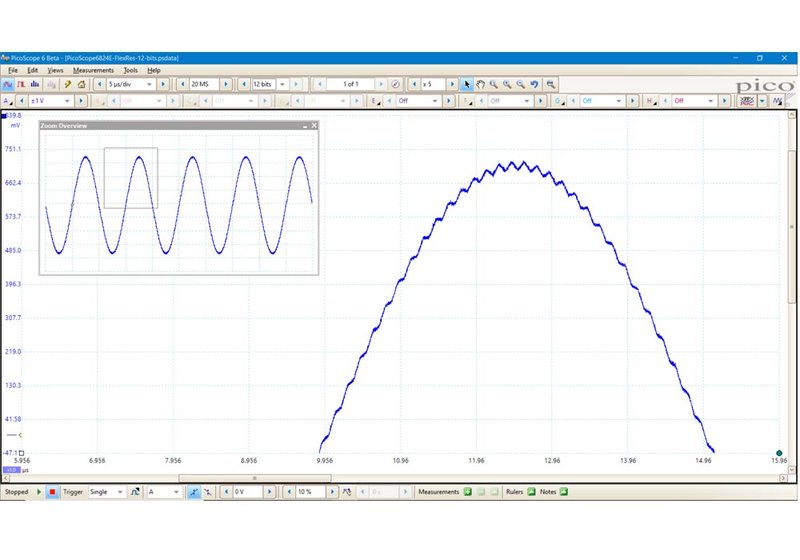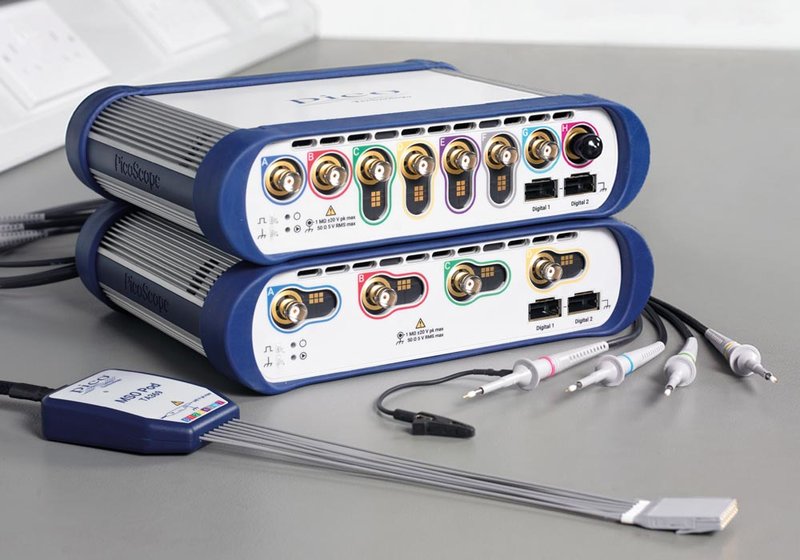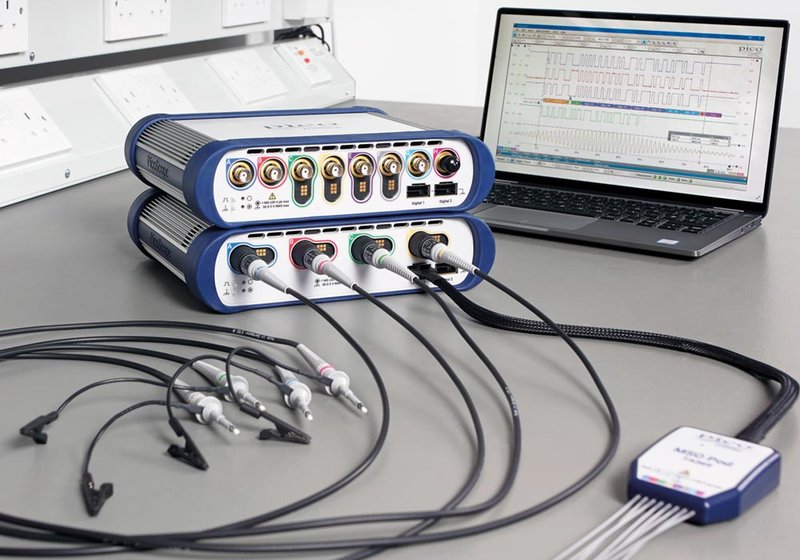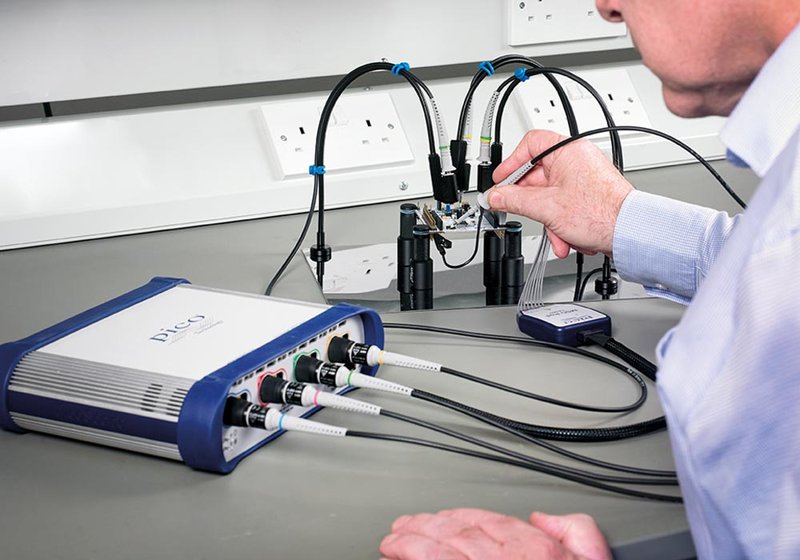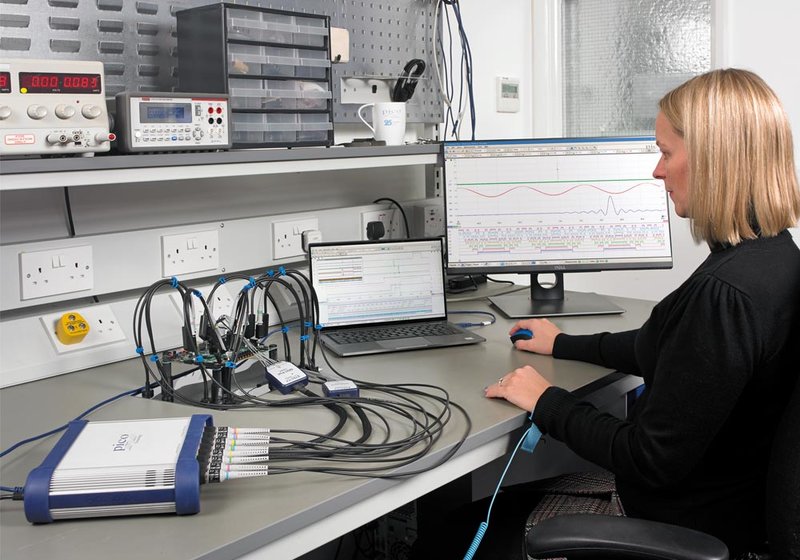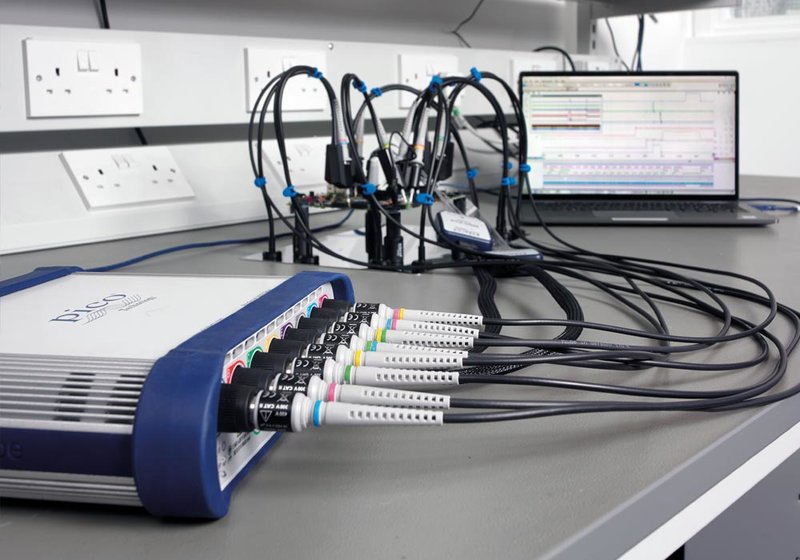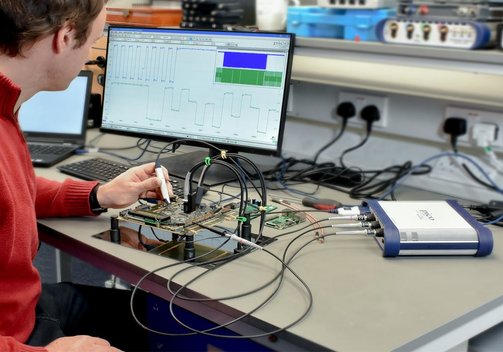PicoScope 6000E Series 4/8-Channel Real-Time Oscilloscopes, up to 1GHz, 5GS/s
Benefits of the PicoScope PS6000E Series Highend-PC-Oscilloscopes
- 4 or 8 analog plus 16 digital channels.
- 1 GHz, 750, 500, or 300 MHz bandwidth, up to 5 GS/s sample, rate, up to 4 GS deep memory.
- FlexRes architecture with 8, 10, or 12 bit resolution.
PicoScope6000E Series 4/8-Channel Real-Time Oscilloscopes, up to 1GHz, 5 GS/s
Models PicoScope PS6426E, PS6425E, PS6824E, PS6424E, PS6406E, PS6405E, PS6804E, PS6404E, PS6403E
The PicoScope 6000E series is a game changer for engineers who are bringing the next generation of embedded systems to market. Coupled with PicoScope 6 software, the 6000E Series offers performance and features that enable visualisation, analysis and debug of complex electronic designs - at a great price! It is also attractive for OEM customers who are looking for great waveform capture capabilities and an effective programming interface. The PicoScope 6000E are USB 3.0 SupperSpeed PC mixed signal oscilloscopes with 4 or 8 analog and 16 digital channels. They offer a bandwidth of up to 1 GHz and a sample rate of up to 5 GS/s, depending on the selected resolution and number of channels in use. Depending on the model, the PicoScope 6000E either has a fixed resolution of 8 bit, or is equipped with Pico's unique and smart FlexRes architecture with resolutions of 8, 10, or 12 bit. The PicoScope 6000E series is supported by the proven PicoScope 6 software with a variety of features included as a standard, such as serial decoding, mask limit testing, math and automatic measures and many more.
- 4 or 8 analog plus 16 high performance digital channels (MSO/mixed-signal oscilloscope). Low noise precision channels
- Deep memory 4, 2 or 1 GS.
- Bandwidth of 1 GHz, 750, 500, or 300 MHz.
- Fast sampling speeds up to 5 GS/s depending on FlexRes resolution and number of channels in use.
- Fixed 8 bit resolution or smart 8/10/12 bit FlexRes architecture.
- Intelligent probe interface.
- Industry leading probe holder system.
- Function and AWG/arbitrary waveform generator: 14 bit, sampling rate up to 200 MS/s.
- USB 3.0 SuperSpeed connectivity.
- Supported by the proven PicoScope 6 software:
Better display performance and visualization tools - support for the latest 4K UHD displays.
Serial protocol decoders as standard.
Time domain, frequency domain, digital domain display and analysis.
Advanced triggers, mask limit testing, alarms.
Model Overview
| Model | PicoScope 6426E | PicoScope 6425E | PicoScope 6824E | PicoScope 6424E | PicoScope 6406E | PicoScope 6405E | PicoScope 6804E | PicoScope 6404E | PicoScope 6403E | ||
| PQ303 | PQ302 | PQ198 | PQ201 | PQ301 | PQ300 | PQ197 | PQ200 | PQ199 | |||
| Analog channels | 4 | 4 | 8 | 4 | 4 | 4 | 8 | 4 | 4 | ||
| Digital channels | 16 (2 pods, 8 channels per MSO pod); max. detectable input frequency 500 MHz (1 Gb/s); min. detectable pulse width 1 ns | 16 (2 pods, 8 channels per MSO pod); max. detectable input frequency 500 MHz (1 Gb/s); min. detectable pulse width 1 ns | |||||||||
| Bandwidth | 1 GHz | 750 MHz | 500 MHz | 500 MHz | 1 GHz | 750 MHz | 500 MHz | 500 MHz | 300 MHz | ||
| Resolution | 8/10/12 bit FlexRes architecture | Fixed, 8 bit | |||||||||
| Sample rate | Real time, 8-bit mode | Up to 2 total analog channels and/or MSO pods | 5 GS/s | 5 GS/s | 5 GS/s | 5 GS/s | 5 GS/s | 5 GS/s | 5 GS/s | 5 GS/s | 2.5 GS/s (2 analog channels); 5 GS/s (1 or no analog channels) |
| Up to 4 total analog channels and/or MSO pods | 2.5 GS/s | 2.5 GS/s | 2.5 GS/s | 2.5 GS/s | 2.5 GS/s | 2.5 GS/s | 2.5 GS/s | 2.5 GS/s | 1.25 GS/s (3 - 4 analog channels); 2.5 GS/s (2 analog channels) | ||
| Up to 8 total analog channels and MSO pods | 1.25 GS/s | 1.25 GS/s | 1.25 GS/s | 1.25 GS/s | 1.25 GS/s | 1.25 GS/s | 1.25 GS/s | 1.25 GS/s | 1.25 GS/s | ||
| Over 8 channels and MSO pods | - | - | 625 MS/s | - | - | - | 625 MS/s | - | - | ||
| Real time, 10-bit mode | 1 analog channel or MSO pod | 5 GS/s | 5 GS/s | 5 GS/s | 5 GS/s | - | - | - | - | - | |
| Up to 2 total analog channels and/or MSO pods | 2.5 GS/s | 2.5 GS/s | 2.5 GS/s | 2.5 GS/s | - | - | - | - | - | ||
| Up to 4 total analog channels and/or MSO pods | 1.25 GS/s | 1.25 GS/s | 1.25 GS/s | 1.25 GS/s | - | - | - | - | - | ||
| Up to 8 total analog channels and/or MSO pods | 625 MS/s | 625 MS/s | 625 MS/s | 625 MS/s | - | - | - | - | - | ||
| Over 8 channels and MSO pods | - | - | 312.5 MS/s | - | - | - | - | - | - | ||
| Real time, 12-bit mode | Up to 2 analog channels plus any MSO pods | 1.25 GS/s | 1.25 GS/s | 1.25 GS/s | 1.25 GS/s | - | - | - | - | - | |
| Memory | 4 GS | 4 GS | 4 GS | 4 GS | 2 GS | 2 GS | 2 GS | 2 GS | 1 GS | ||
| Triggering | Source: Any analog channel, AUX trigger, plus digital channels with optional TA369 MSO pods; trigger modes: None, auto, repeat, single, rapid (segmented memory); advanced trigger types (analog channels): Edge, window, pulse width, window pulse width, level dropout, window dropout, interval, runt, logic (logic allows arbitrary combinations of up to 4 analog channels or MSO ports); advanced trigger types (digital channels, with optional MSO pods): Edge, pulse width, dropout, interval, pattern, logic (mixed signal) | ||||||||||
| Other standard functions | Math channels, automatic measurements, DeepMeasure, serial decoding (1-wire, ARINC 429, BroadR-Reach, CAN and CAN FD, DALI, DCC, DMX512, Ethernet 10Base-T, Fast Ethernet 100Base-TX, FlexRay, I²C, I²S, LIN, Manchester, Modbus ASCII and Modbus RTU, PS/2, SENT Fast, SENT Slow, SPI, UART (RS232/RS422/RS485), and USB 1.0/1.1), mask limit testing | ||||||||||
| Spectrum analyzer | Frequency range DC to scope bandwidth; display modes: Magnitude, average, peak hold; windowing functions: Rectangular, Gaussian, triangular, Blackman, Blackman-Harris, Hamming, Hann, flat-top | ||||||||||
| Waveform generator | Function and AWG/arbitrary waveform generator; standard signals: Sine, square, triangle, DC voltage, ramp up, ramp down, sinc, Gaussian, half-sine; up to 50 MHz (sine, square, other waves: Up to 1 MHz); arbitrary: 14 bit, sampling rate up to 200 MS/s, buffer 40 kS | ||||||||||
| PC connectivity | USB 3.0 SuperSpeed (USB 2.0 compatible); PC connector: USB type B | ||||||||||
| Power | 12 VDC from supplied PSU; up to 5 A (scope only) or 7 A including scope-powered accessories | ||||||||||
| Dimensions (mm) | 245 x 192 x 62; 2.2 kg | ||||||||||
Included: PicoScope PS 6426E (PQ303), PS 6425E (PQ302), PS 6824E (PQ198), PS 6424E (PQ201), PS 6406E (PQ301), PS 6405E (PQ300), PS 6804E (PQ197), PS 6304E (PQ200), or PS 6303E (PQ199), 4 passive probes, USB cable, power supply adaptor, transportation case, ▸PicoScope7 software and full user manual via download from Pico web-site.
Optional accessories: MSO pod/logic probes, additional/spare probes, probe holder system.
Question: Is the PicoScope 6000E a mixed-signal oscilloscope as standard?
Answer: Yes, the PicoScope 6000E is a mixed-signal oscilloscope as standard, i.e. it provides 16 digital channels in addition to the 4 or 6 analog input channels. These are split into 2 MSO pods of 8 channels each and can be used for logic analysis in mixed analog and digital designs. However, the logic pods required for connection (order number ▸TA369 - 8-channel MSO pod kit) are not supplied as standard, but are available as optional accessories.
Question: Do I have to buy the PicoScope software separately?
Answer: No, the complete ▸PicoScope7 software is available as a free download from the manufacturer's website. You can even download and try out the software before purchasing the PicoScope: Many functions work in a kind of demo/simulation mode even without the scope hardware. Pico Technology also offers free, unlimited updates of the software.
Question: Is serial decoding standard for the PicoScope 6000E series?
Answer: Yes, serial decoding is included as standard in the PicoScope software. The supported protocols are (as at April 2021): 1-Wire, ARINC 429, BroadR-Reach, CAN and CAN FD, DALI, DCC, DMX512, Ethernet 10Base-T, Fast Ethernet 100Base-TX, FlexRay, I²C, I²S, LIN, Manchester, Modbus ASCII and Modbus RTU, PS/2, SENT Fast, SENT Slow, SPI, UART (RS232/RS422/RS485), and USB (1.0/1.1). Pico adds more protocols with free software upgrade.
Question: What is FlexRes?
Answer: Common oscilloscopes usually work with a resolution of 8 bit. The focus is on fast sampling rates and high bandwidths for analysis of fast digital signals. Some special oscilloscope models with high resolution work with 12 or 16 bit. They are particularly suitable for measuring analog signals with high resolution, improved dynamic range, reduced noise and reduced distortion. However, the resolution is always fixed and the decision as to which resolution suits the particular application must be made at the time of purchase. Pico Technology's FlexRes technology, on the other hand, offers flexible resolution: The oscilloscope hardware with this technology can be reconfigured to optimize either sample rate or resolution. The scope is then either a fast (5 GS/s) 8-bit oscilloscope for digital signal analysis, a 10-bit oscilloscope for general applications, or a high-resolution 12-bit oscilloscope for audio and other analog signals. So FlexRes is the ideal solution for applications that include both the "analog" and "digital world".
Information on product safety:
Manufacturer:
Pico Technology Ltd., James House, Colmworth Business Park, St Neots, Cambridgeshire, PE19 8YP/GBR
www.picotech.com
Responsible person:
Meilhaus Electronic GmbH, Am Sonnenlicht 2, 82239 Alling/DEU
info@meilhaus.com
Related Products
Customers also bought
Last seen






















